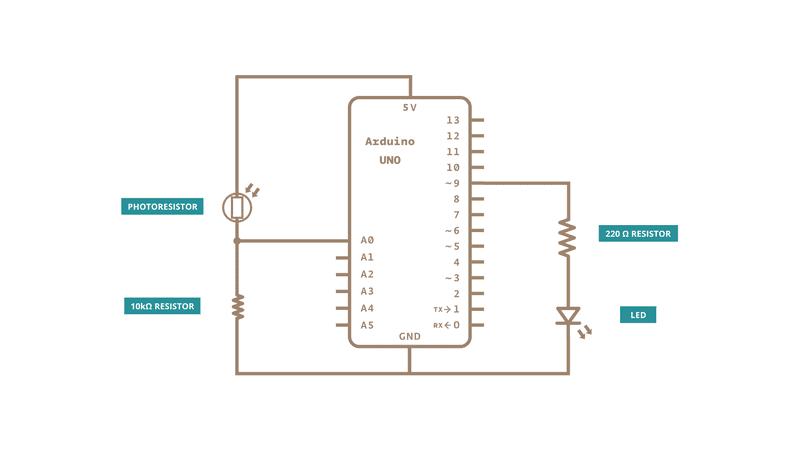Calibration
This example demonstrates one techinque for calibrating sensor input. The board takes sensor readings for five seconds during the startup, and tracks the highest and lowest values it gets. These sensor readings during the first five seconds of the sketch execution define the minimum and maximum of expected values for the readings taken during the loop.
Hardware Required
Arduino board
LED
analog sensor (a photoresistor will do)
10k ohm resistor
220 ohm resistor
hook-up wires
breadboard
Circuit
Analog sensor (e.g. potentiometer, light sensor) on Analog input 2. LED on Digital pin 9.

Connect an LED to digital pin 9 with a 220 ohm current limiting resistor in series. Connect a photoresistor to 5V and then to analog pin 0 with a 10K ohm resistor to ground.
Schematic

Code
Before the setup, you set initial values for the minimum and maximum like so:
int sensorMin = 1023; // minimum sensor value
int sensorMax = 0; // maximum sensor value
These may seem backwards. Initially, you set the minimum high and read for anything lower than that, saving it as the new minimum. Likewise, you set the maximum low and read for anything higher as the new maximum, like so:
// calibrate during the first five seconds
while (millis() < 5000) {
sensorValue = analogRead(sensorPin);
// record the maximum sensor value
if (sensorValue > sensorMax) {
sensorMax = sensorValue;
}
// record the minimum sensor value
if (sensorValue < sensorMin) {
sensorMin = sensorValue;
}
}
This way, any further readings you take can be mapped to the range between this minimum and maximum like so:
// apply the calibration to the sensor reading
sensorValue = map(sensorValue, sensorMin, sensorMax, 0, 255);
Here's the whole program:
See Also:
while()
millis()
map()
AnalogInOutSerial - Read an analog input pin, map the result, and then use that data to dim or brighten an LED.
AnalogInput - Use a potentiometer to control the blinking of an LED.
AnalogWriteMega - Fade 12 LEDs on and o¬ff, one by one, using an Arduino Mega board.
Fading - Use an analog output (PWM pin) to fade an LED.
Smoothing - Smooth multiple readings of an analog input.
Last revision 2015/07/29 by SM